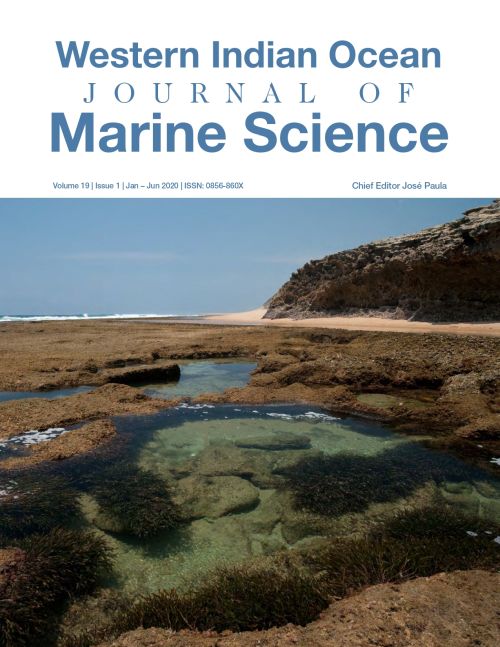Main Article Content
Adsorption-desorption of chlorpyrifos in soils and sediments from the Rufiji Delta, Tanzania
Abstract
Batch adsorption-desorption equilibrium techniques were used to investigate the adsorption capacity and influence of salinity on partitioning of the insecticide chlorpyrifos between water and soil or water and sediments from the Rufiji Delta. The data were fitted to different adsorption-desorption models and the hysteresis index was calculated using the ratio between the Freundlich exponents for desorption and adsorption, and secondly, the difference in area under the normalized adsorption and desorption isotherms using the maximum adsorbed and solution concentrations. The data showed non-linear adsorption and that chlorpyrifos was strongly adsorbed to soil and sediments from the Rufiji Delta. The linearized adsorption coefficient (KD) and Freundlich adsorption coefficient (Kf) correlated significantly with organic carbon content. Chlorpyrifos adsorption as well as hysteresis calculated by both methods decreased with salinity (i.e. the sediment adsorbs increasing amounts of chlorpyrifos with decreasing salinity). This indicates that settling of freshwater sediments is among the major removal pathways of the chemical from the water column, but increased turbulence during high tides may resuspend settled sediment simultaneously increasing salinity and re-dissolve chlorpyrifos. However, discharge of fresh water, particularly during heavy rains, increases the trapping efficiency of the sediments. The theoretical approach developed showed that the Langmuir model describes the desorption data better than the Freundlich model, and that a better index of hysteresis is one that considers areas under the adsorption and desorption isotherms, provided the desorption isotherm is described by the normalized Langmuir isotherm and the adsorption isotherm by the normalized Freundlich isotherm.






